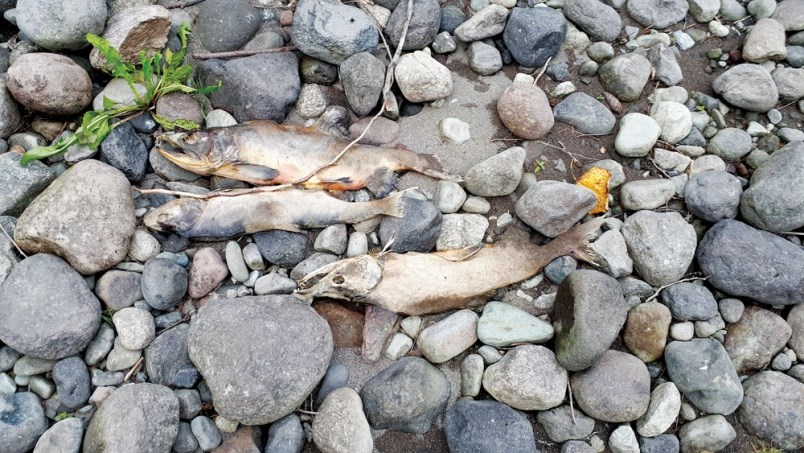Editor’s note, this column references the letter by BC Hydro “BC Hydro response to Patricia Heintzman’s column,” published Oct. 24.
While I appreciate BC Hydro’s reply to my Oct. 18 column “BC Hydro must do way better,” the company’s response is duplicitous and misleading. Platitudes and professions of environmental stewardship and a commitment to change are meaningless when those claims contradict actions past and present and undermine any confidence that things might actually change at BC Hydro.
Let me explain as I dissect their response.
BC Hydro said: “We take our role as shared stewards of the Cheakamus River very seriously and are committed to learning from this and identifying ways we can do better.”
This statement is fundamentally disingenuous and inconsistent with BC Hydro’s systematic cutting of fish population monitoring programs, which culminated in the termination of monitoring studies originally funded under the Cheakamus River Water Use Plan (WUP). This includes cutting the Steelhead Project which specifically found population-level impacts of high ramping rates.
If BC Hydro purports meaningful stewardship, and is committed to improved ramping rates and more natural daily hydrological regimes on the Cheakamus, then why were these studies cut? Perhaps the elimination of the monitoring studies makes it easier to claim that they don’t know if a fish stranding event has affected fish populations or if their practices even contributed to it. Ignorance is bliss and deniability now an option.
It’s worth noting that BC Hydro has had an existing order to review the WUP flow rates since 2016 yet they cut the monitoring programs designed to inform the process in spite of strong objection from the WUP monitoring committee. Why wasn’t the mandated 10-year review completed in 2016? What is the provincial government’s responsibility?
I understand this review is finally underway, but the process for stakeholder engagement is not identified. How is the community to participate and help inform the outcome?
BC Hydro said: “I want to clarify that we are operating within the approved ramping rates set by the Water comptroller and have been implementing and evaluating ramping rates recommended by the Department of Fisheries and Oceans (DFO).”
This statement is misleading and offers the reader a false sense of security. The WUP rates are set by the Water comptroller and BC Hydro has been following them generally. But these rates, which were only tested once Nov. 1, 2008 from the Daisy Lake Dam outlet to Rubble Creek and not tested below the Cheakamus Canyon in the anadromous region where salmon and steelhead migrate and spawn, are four to seven times higher than the Department of Fisheries and Oceans (DFO) recommended ramp rates. In laypersons terms, BC Hydro can release and shut off water from the Daisy Lake Reservoir much more quickly than DFO’s recommended ramp rates for fish survival. This practice, and cutting the river’s flow in half in a day, were the main causes of the mass stranding, 2,000 plus pink spawner event of Sept. 19.
It begs the questions: Why were these woefully under tested, non-DFO compliant ramp rates ever allowed in the first place? How is the provincial water comptroller OK with these standards when these ramp rates evidently kill fish en masse? Can DFO explain this significant discrepancy from their standards on the Cheakamus River? Can BC Hydro?
There are a lot of good people working for BC Hydro who are doing important work that is valuable. These pointed remarks in no way reflect on them, but rather on the specific standards and policies governing the Cheakamus River and a corporate culture that does not evidently prioritize stewardship.
Hydro-electricity is a fundamental part of BC’s energy supply. Power generation from low-carbon sources like hydro are critical if we are to stave off catastrophic climate change. And we all acknowledge that BC Hydro must generate power from its Cheakamus Generating Plant and that there will inevitably be some impacts from this process to the river ecology. But to be successful and intentional environmental stewards as BC Hydro professes to be, every effort should be made to mitigate them. Thus far this is simply not the case.
Contradictory to BC Hydro’s insinuation in their response, the layperson is well able to understand and appreciate the basic concepts of competing environmental and economic interests and the layered complexity of river science and management. The average Joe or Jane also knows the right thing to do when they see it despite the smoke and mirrors.
Words need to be backed up with actions and it is time we all call BC Hydro to task. They must do way better.



